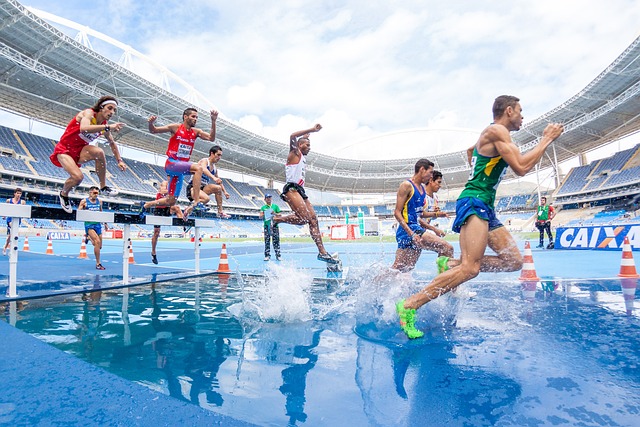Athletic performance is a combination of skill, training, and proper nutrition. Behind every successful athlete lies a scientific approach to conditioning, recovery, and diet. Understanding how training and nutrition impact performance can help athletes reach their peak potential. This article explores the science of sports, breaking down how structured training, diet, and recovery techniques contribute to athletic excellence.
The Role of Training in Athletic Performance
Training is the backbone of athletic success. Whether an athlete competes in endurance sports, strength-based competitions, or team sports, structured training plans optimize performance by enhancing strength, agility, endurance, and speed.
1. Strength and Conditioning
Strength and conditioning programs help athletes build muscle, improve power, and prevent injuries. Key components include:
- Resistance Training: Weightlifting, bodyweight exercises, and resistance bands build muscular strength and endurance.
- Plyometrics: Explosive movements like box jumps improve power and agility.
- Core Stability: Strengthening the core enhances balance, stability, and injury prevention.
2. Endurance Training
Cardiovascular fitness is crucial for many sports. Endurance training enhances an athlete’s ability to sustain performance over long durations. Techniques include:
- Aerobic Training: Long-distance running, cycling, or swimming improves heart and lung efficiency.
- Interval Training: Alternating between high-intensity bursts and low-intensity recovery phases increases stamina and cardiovascular endurance.
- High-Intensity Interval Training (HIIT): Short, intense workouts improve both aerobic and anaerobic endurance.
3. Speed and Agility Training
Speed and agility separate elite athletes from the rest. Key drills include:
- Sprint Training: Improves acceleration and top-end speed.
- Ladder Drills: Enhances foot speed and coordination.
- Reaction Drills: Improves reflexes and reaction time in dynamic sports settings.
4. Recovery and Injury Prevention
Training without proper recovery leads to overuse injuries and performance plateaus. Effective recovery methods include:
- Active Recovery: Low-intensity exercises, such as yoga or swimming, aid muscle recovery.
- Foam Rolling and Stretching: Reduces muscle tightness and prevents injuries.
- Sleep and Rest: Essential for muscle repair, hormone balance, and mental recovery.
The Impact of Nutrition on Athletic Performance
Nutrition plays a pivotal role in fueling the body, enhancing recovery, and maintaining optimal performance. Athletes require a balanced diet tailored to their specific sport and energy demands.
1. Macronutrients: Fuel for Performance
- Carbohydrates: The primary energy source for athletes, found in whole grains, fruits, and vegetables.
- Proteins: Essential for muscle repair and growth; sources include lean meats, dairy, eggs, and plant-based proteins.
- Fats: Healthy fats, such as avocados, nuts, and olive oil, provide sustained energy and support hormone production.
2. Hydration and Electrolyte Balance
Dehydration reduces performance, leading to fatigue, cramps, and decreased concentration. Proper hydration strategies include:
- Drinking Water Regularly: Maintain hydration throughout the day, not just during training.
- Electrolyte Replacement: Sports drinks, coconut water, and sodium-rich foods help replenish lost minerals.
- Monitoring Hydration Levels: Checking urine color and body weight before and after workouts helps assess hydration status.
3. Pre-Workout Nutrition
Fueling before training ensures sustained energy levels:
- Carbohydrates: Provide quick energy (e.g., oatmeal, bananas, whole wheat toast).
- Protein: Supports muscle repair and endurance (e.g., Greek yogurt, eggs, lean meats).
- Timing: Eating 1-3 hours before exercise optimizes performance.
4. Post-Workout Nutrition
Recovery meals aid muscle repair and glycogen replenishment:
- Protein: Essential for muscle recovery (e.g., whey protein, chicken, fish).
- Carbohydrates: Replenish energy stores (e.g., brown rice, quinoa, sweet potatoes).
- Hydration: Replaces fluids lost during exercise.
The Role of Sports Science in Performance Optimization
Sports science integrates biomechanics, physiology, and psychology to maximize athletic potential.
1. Biomechanics and Movement Efficiency
Analyzing movement mechanics helps improve technique, reduce injury risk, and enhance efficiency.
- Motion Analysis: Identifies inefficiencies in running, jumping, or lifting techniques.
- Force Plates: Measure power output and balance for performance optimization.
- Wearable Technology: Tracks movement patterns, fatigue levels, and workload.
2. Sports Psychology and Mental Training
The mental aspect of sports is as important as physical training.
- Visualization Techniques: Imagining success enhances confidence and focus.
- Mindfulness and Stress Management: Helps athletes stay calm under pressure.
- Goal Setting: Creates motivation and a clear path to success.
3. Data-Driven Performance Tracking
Technology and data analytics play a huge role in sports performance:
- Heart Rate Monitoring: Tracks cardiovascular efficiency and training intensity.
- GPS Tracking: Analyzes movement patterns and workload.
- Recovery Metrics: Helps athletes optimize training loads and prevent overtraining.
Conclusion: The Science Behind Peak Performance
Athletic performance is a fusion of training, nutrition, and science-backed techniques. From strength conditioning to mental resilience, every aspect plays a role in achieving excellence. By understanding and applying sports science principles, athletes can optimize their performance, reduce injuries, and maintain longevity in their respective sports. Whether you’re a weekend warrior or an elite competitor, prioritizing training, nutrition, and recovery will lead to sustained success in the world of sports.





